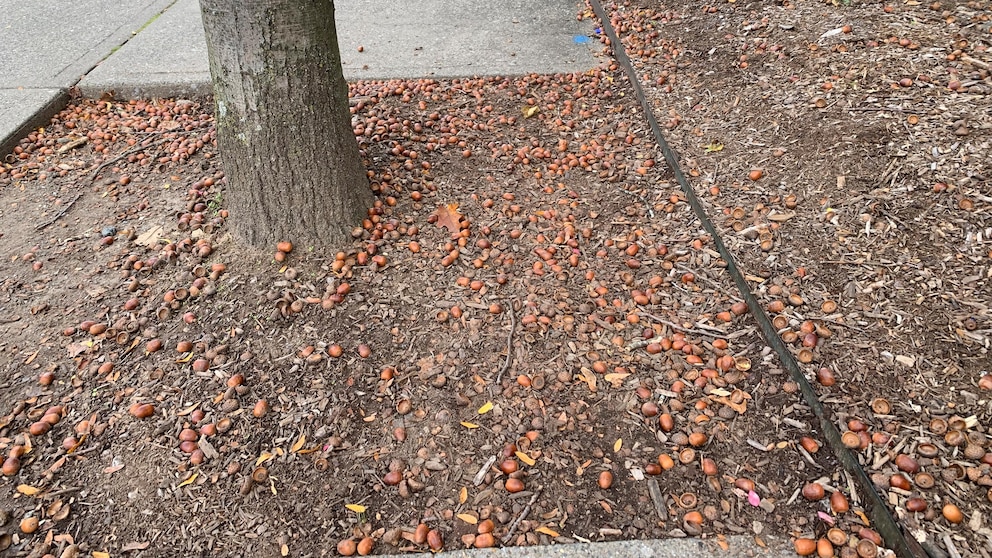Understanding the Abundance of Acorns This Fall: Exploring the Concept of ‘Mast’ Years
As autumn arrives, many of us notice an abundance of acorns scattered across the ground. These small, nut-like seeds are a common sight during this time of year, but have you ever wondered why some years seem to have an overwhelming number of acorns while others do not? The answer lies in the concept of ‘mast’ years, a phenomenon that has intrigued scientists and nature enthusiasts for centuries.
Mast years refer to periods when certain tree species, particularly oak trees, produce a significantly larger quantity of seeds than usual. This phenomenon occurs irregularly, with mast years happening every two to seven years, depending on the species and environmental conditions. During these years, the forest floor becomes carpeted with acorns, creating a feast for wildlife and impacting ecosystems in various ways.
The term ‘mast’ originates from the Old English word ‘mæst,’ which means food for animals. It accurately describes the purpose of these abundant seed productions – to provide a substantial food source for wildlife. Acorns are a vital food source for numerous animals, including squirrels, deer, turkeys, and even bears. In mast years, these animals can feast on the plentiful acorns, building up their fat reserves for the winter months.
So, what triggers mast years? While scientists have yet to fully understand all the factors involved, several theories have been proposed. One theory suggests that mast years are a result of synchronized reproduction among trees of the same species. This synchronization may be influenced by climate conditions, such as temperature and rainfall patterns. Another theory suggests that mast years are a defensive strategy against seed predators. By producing an overwhelming number of seeds in mast years, trees increase the chances that at least some seeds will survive and germinate.
Interestingly, mast years can have both positive and negative effects on ecosystems. On one hand, the abundance of acorns provides a significant food source for wildlife, helping them survive harsh winters and reproduce successfully. This increased food availability can lead to population booms in certain species, which can have cascading effects on other parts of the ecosystem. For example, an increase in squirrel populations may result in more seed dispersal, benefiting tree regeneration.
On the other hand, mast years can also lead to negative consequences. The sudden surge in acorn production can overwhelm seed predators, such as squirrels, causing them to bury more acorns than they can consume. This excess burying behavior can result in a surplus of acorns that remain ungerminated, potentially leading to overcrowding and competition among seedlings in the following years. Additionally, mast years can disrupt the balance of predator-prey relationships, as an abundance of food can attract an excessive number of herbivores, which may damage vegetation or increase the risk of disease transmission.
Understanding mast years and their implications is crucial for ecologists and forest managers. By studying the patterns and triggers of mast years, scientists can gain insights into the dynamics of forest ecosystems and how they respond to environmental changes. This knowledge can help inform conservation efforts, forest management practices, and even predict wildlife population fluctuations.
So, the next time you come across a carpet of acorns during your autumn stroll, take a moment to appreciate the fascinating phenomenon of mast years. These abundant seed productions not only provide a bountiful feast for wildlife but also offer a glimpse into the intricate workings of nature’s cycles.



